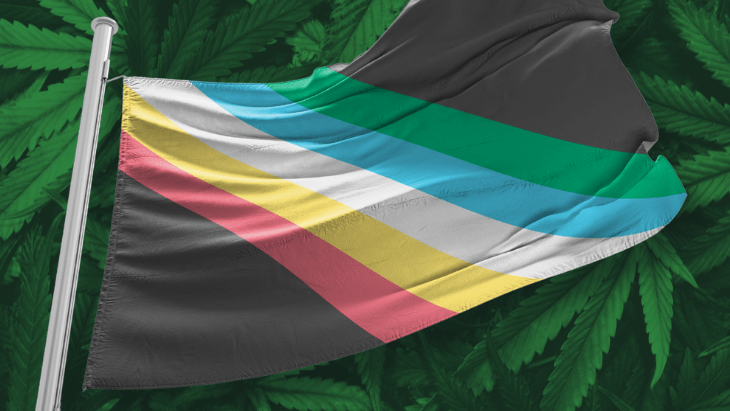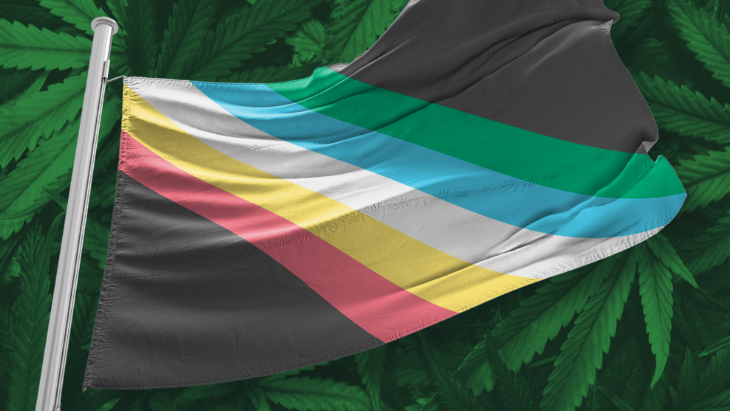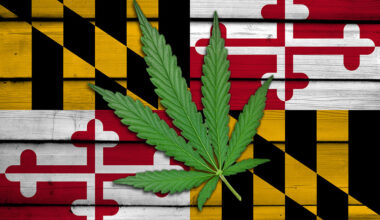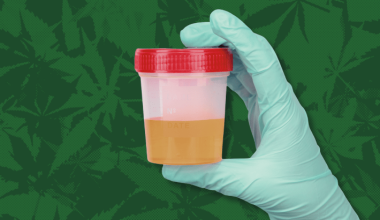Introduction: A Movement for Access and Dignity

This Disability Pride Month, we recognize that in the fight to legalize cannabis, few voices have been as critical – or as underappreciated – as those of Americans with disabilities. For decades, patients living with disabilities and chronic illnesses have stood at the forefront of cannabis advocacy, transforming their battles for health into a public crusade for compassion. They were among the first to prove that marijuana is more than a recreational substance – it is a lifeline for those in pain, a tool for reclaiming quality of life when conventional medicine falls short. Their activism helped shift cannabis from a stigmatized “illicit drug” to a recognized form of medicine and wellness. Thirty-five years after the Americans with Disabilities Act (ADA) affirmed the rights of disabled Americans, the disability community’s push for cannabis access has become a vital extension of the fight for equality and inclusion. As we mark Disability Pride Month this July, we celebrate the patients, caregivers, advocates, and everyday trailblazers with disabilities who have propelled the cannabis reform movement forward. Their stories – of courage, ingenuity, and perseverance – remind us that the struggle for health justice and the struggle for cannabis legalization are deeply interconnected, and that every gain in cannabis policy is a victory for dignity, independence, and hope.
The First to Fight: Patients Who Paved the Way
Long before medical marijuana was front-page news, disabled Americans were quietly making history by claiming their right to this plant. In 1976, a 28-year-old glaucoma patient named Robert C. Randall became the first person in the U.S. to win legal access to cannabis for medical use. Facing the terror of impending blindness, Randall had been growing a few marijuana plants to relieve his intraocular pressure. When arrested, he pioneered the medical necessity defense – and prevailed. A Washington, D.C. judge agreed that Randall’s need to prevent blindness outweighed the technical violation of the law, dismissing his charges. In the aftermath, not only did Randall avoid prison, but he convinced the federal government to provide him with cannabis from its research supply. His improbable victory made him, as NORML’s founder Keith Stroup said, “the father of the medical marijuana movement.” It was a singular moment: a disabled individual forcing the system to acknowledge cannabis as legitimate medicine.
Randall didn’t stop at his case. He and his wife Alice founded the Alliance for Cannabis Therapeutics, gathering testimonies from patients nationwide who found relief in cannabis. Throughout the late 1970s and 1980s, they fought to expand access, at one point even securing a federal program (the Compassionate Investigational New Drug program) that supplied government-grown cannabis to a limited number of patients. By the early 1990s, a small cadre of seriously ill Americans – people with glaucoma, severe epilepsy, multiple sclerosis, and other conditions – were receiving legal cannabis cigarettes each month from this program. These individuals, often wheelchair users or battling progressive illnesses, were living proof of marijuana’s medical value at a time when officialdom still dismissed it. But in 1992, as the AIDS crisis drove a surge of new applicants, the George H.W. Bush Administration abruptly shut the program to new enrollments rather than widen access. Dozens of hopeful patients (many with HIV/AIDS) were left in the lurch. This callous closure was a turning point. Denied medicine by the establishment, disabled activists and their allies turned to the state level, channeling their frustration into political action. If Washington, D.C. wouldn’t help, they would change the law state by state.
Compassion and Courage Spark State Reforms
By the mid-1990s, the impact of these early patient advocates was unmistakable. In California – a state whose medical cannabis revolution owed much to the disability community – a coalition of patients, caregivers, and supporters placed Proposition 215, the Compassionate Use Act, on the 1996 ballot. Many of these advocates were people living with AIDS, cancer, paralysis, and other debilitating conditions. They spoke from experience: cannabis eased their nausea, restored their appetites, relaxed their spasms, dulled their relentless pain. With poignant testimonies and grassroots organizing, they reframed the public’s understanding of cannabis. No longer was this solely an issue of “youthful indulgence” or counterculture – it was a matter of mercy for the sick and suffering. Quadriplegic individuals in wheelchairs attended rallies; chemotherapy patients talked about needing marijuana to eat; families of children with seizure disorders begged voters to show compassion. Their message resonated. Prop 215 passed, making California the first state to legalize medical marijuana and shattering the federal government’s 59-year blockade on recognizing cannabis as medicine. In the words of one campaign supporter, it was “a victory for sanity and humanity.” Indeed, California’s breakthrough opened floodgates: in the years following, state after state adopted medical cannabis laws, a domino effect propelled by the courage of disabled patients who refused to remain silent.
We should remember that behind every legislative milestone were individual acts of bravery. When the federal DEA tried to intimidate medical marijuana pioneers, disabled advocates pushed back. A notable example came in 2002 in Santa Cruz, California, when agents raided the Wo/Men’s Alliance for Medical Marijuana (WAMM) – a collective run by and for seriously ill patients. WAMM’s co-founder, Valerie Corral, had herself suffered a traumatic brain injury that left her with severe epilepsy. Cannabis was the only thing that quelled her relentless seizures. After the raid seized WAMM’s plants, Valerie (often described as the “Florence Nightingale of the medical marijuana movement”) and the collective’s patients – many in wheelchairs and hospital beds – staged a public protest at City Hall, even passing out free cannabis to sick members in an act of civil disobedience. Televised images of frail, disabled patients defiantly clutching cannabis plants, with local officials standing in solidarity, turned the tide of public sympathy firmly in their favor. Under pressure, federal authorities backed off, and eventually Santa Cruz officials worked with WAMM to allow its members continued access. This extraordinary saga highlighted a simple truth: the disability community infused the medical cannabis fight with a moral urgency and authenticity that even the harshest drug warriors struggled to counter. Their willingness to “come out” publicly as cannabis patients – often at great personal risk – gave a human face to the issue and forced society to confront the cruelty of denying medicine to those in need.
Acts of Civil Disobedience: “Doing What Needs to Be Done”
Some of the most powerful moments in cannabis advocacy have come from acts of civil disobedience by disabled patients and their loved ones. In the late 1990s, Cheryl Miller, a woman from New Jersey who had been rendered largely immobile by multiple sclerosis, became a symbol of fearless activism. Cheryl found that consuming cannabis eased her rigid muscle spasms and severe pain when nothing else would. However, marijuana was illegal in her state, and even Congress had stalled on medical cannabis bills. Rather than accept suffering in silence, Cheryl and her devoted husband, Jim, took their fight directly to the halls of power. They wheeled her gurney into the offices of Congressman after Congressman in Washington, D.C., telling politicians to their faces why cannabis prohibition was tormenting patients like her. In 1998, in an extraordinary protest, Cheryl Miller was arrested after taking a dose of cannabis right outside the door of a congressional office, openly flouting the law to make her point. She repeated this bold act in front of vehemently anti-cannabis lawmakers, shaming them with her presence. Imagine the scene: a woman who could no longer lift her arms due to MS, engaging in “some pretty big swings” (as Jim fondly described) by publicly breaking an unjust law – all because, as Jim said, “she was afraid of being able to help seriously ill people, and not doing so.” Cheryl’s civil disobedience, covered in national media, put Congress on notice and inspired a generation of advocates. Though she passed away in 2003, her legacy endures in every East Coast state that eventually legalized medical cannabis. The Millers’ mantra – don’t be afraid of doing what needs to be done – captures the spirit that many disabled activists have brought to this movement.
Civil disobedience in the disability cannabis community has not been limited to individual stunts; it’s also been organized and strategic. Throughout the 2000s, groups of patients in wheelchairs led protests at state capitols, demanding lawmakers see their faces and hear their voices. They held signs reading “Let Patients Live” and “My Medicine, My Right.” HIV-positive advocates and cancer survivors in midwestern and southern states – places slower to reform – formed patient coalitions, sometimes risking arrest by openly distributing cannabis among support group members. These deliberate challenges to the law created legal test cases and kept the pressure on. In one memorable instance, a quadriplegic man in Kansas famously told a courtroom that jailing him for using cannabis would be a death sentence, because without it, he couldn’t keep food down. Such testimonies, often delivered from wheelchairs or hospital beds, were impossible to ignore. Bit by bit, they eroded the rationale for prohibition. Judges, juries, and legislators alike had to confront the question: What kind of society criminalizes its most vulnerable citizens for seeking relief? The answer, increasingly, was clear – one in need of change.
Veterans Join the Fight for the Right to Heal
Within the disability community, one group has played an outsized role in shifting attitudes and policies around cannabis: military veterans. Veterans often return home with service-connected disabilities – chronic pain, amputations, traumatic brain injuries, PTSD – and all too frequently, they find themselves dependent on cocktails of prescription drugs that offer incomplete relief or cause terrible side effects. Over the past two decades, veterans have become some of the staunchest advocates for medical cannabis, viewing it as an extension of the duty to care for those who have borne the battle. Their involvement added a new dimension to the cannabis reform movement, one grounded in patriotism and moral obligation.
In the 2000s, organizations like Veterans for Medical Cannabis Access emerged, led by vets who used cannabis to replace opioids or calm the demons of war. They brought compelling credibility to the issue. It’s hard to label a decorated veteran seeking pain relief as a “criminal” or “stoner.” People like Air Force Sergeant Mike Krawitz, who was severely injured in a line-of-duty accident, spoke out about how cannabis allowed him to step off a downward spiral of narcotic painkillers. Krawitz and others lobbied the Veterans Administration relentlessly, pushing it to change policies that treated medical marijuana patients as outlaws. In 2011, in a landmark shift, the VA finally adjusted its rules: VA doctors would be allowed to talk about medical cannabis with patients and veterans using state-legal marijuana would no longer risk losing their VA health benefits. This policy change – essentially acknowledging cannabis as legitimate medicine for veterans – was directly attributable to veteran advocacy. And still, veterans pressed on for more. They’ve campaigned for federal research into cannabis for PTSD, funded studies on how cannabis can reduce suicide and overdose rates, and supported state-level initiatives to include PTSD and chronic pain as qualifying conditions in medical marijuana programs. In recent years, veterans in wheelchairs have testified in front of state legislatures, sometimes dressed in their military uniforms adorned with medals, delivering emotional pleas that no veteran should be treated like a criminal for using cannabis to heal scars of war. Their stories – of finding in cannabis a path away from alcoholism, insomnia, night terrors, or physical agony – have moved bills forward in even conservative states. From Oklahoma to Virginia, lawmakers have cited veteran input as a decisive factor in passing reforms. By standing up, the veteran community has reinforced a core message: caring for disabled people must include access to whatever therapies improve their lives, including cannabis. In essence, they reframed medical marijuana as part of the sacred promise to “support our troops” when they come home wounded.
Changing Minds Through Personal Testimony
The disability community’s influence on cannabis legalization extends beyond changing laws – it has profoundly changed minds and hearts. Perhaps the most significant shift has been in public opinion, where over the last 25 years Americans went from largely skeptical about medical marijuana to overwhelmingly supportive. Disabled individuals’ personal stories have been the catalyst for this change. They put a human face on an issue long obscured by fear and stigma, and Americans responded with empathy.
One turning point was the mainstream media’s focus on children with severe epilepsy in the 2010s. When the story of little Charlotte Figi – a 5-year-old with Dravet syndrome whose relentless seizures were dramatically reduced by cannabis oil – hit the airwaves, it ignited a national conversation. Charlotte, though not “disabled” in the traditional sense of mobility, was profoundly affected by her neurological disorder. Her parents’ decision to try a high-CBD cannabis extract (now famous as “Charlotte’s Web”) and its near-miraculous results were featured on CNN in 2013. Suddenly, millions of viewers who had never thought twice about cannabis saw an innocent child’s life transformed by a plant – and the only thing standing in the way was an outdated law. The compassionate appeal of this story led many states to pass “CBD-only” laws to help children with epilepsy, even in places that were politically opposed to broader cannabis reform. It was a clear example: when confronted with suffering and a real solution, people’s prejudices soften. And while some of those early CBD laws were limited, they cracked open the door by acknowledging cannabis’s medical value.
Stories like Charlotte’s were backed by countless other testimonials from the disability community: the veteran with PTSD who says cannabis saved him from suicide, the middle-aged woman with fibromyalgia who got her life back when she switched from opioids to cannabis, the college student with cerebral palsy who can control her muscle spasms enough to live independently thanks to a nightly toke. These narratives, shared on social media, in legislative hearings, and one-on-one conversations across the country, created an undeniable groundswell. They normalized the idea of cannabis as medicine. Grandparents who might never have considered it found themselves sympathetic after seeing a news segment or hearing from a neighbor about how cannabis helped with Parkinson’s disease tremors or the side effects of chemotherapy. Over time, the stereotype of the lazy, “able-bodied stoner” was eclipsed by the image of the determined patient simply trying to live with less pain. Public opinion polls showed a steady year-by-year increase in support for medical cannabis, surpassing 70% and even 80% in recent years. This is not coincidental – it is the direct result of disabled individuals and their families speaking their truth and the public listening.
Moreover, this open dialogue drew support from healthcare professionals. Many doctors who were initially hesitant about cannabis changed their stance after witnessing patients’ improvements. Nurses, hospice workers, and caregivers became some of the fiercest allies, often because they saw that a patient able to take a few drops of cannabis tincture might eat a meal, or sleep through the night, or smile and converse for the first time in weeks. Such small victories in caregiving accumulate into a powerful argument. Cannabis moved from fringe to frontline in palliative care and chronic illness management, further eroding the wall of stigma. In short, the disability community’s willingness to share personal experiences has arguably done more to advance cannabis reform than any scientific study or political campaign. They changed the narrative from “marijuana as a dangerous drug” to “cannabis as a compassionate medicine.” And when you change the narrative, you change reality.
Intersectionality: Disability Rights and Cannabis Justice
It’s important to recognize that many disabled cannabis advocates stand at the crossroads of multiple social justice battles. Disability cuts across every line of identity – you can be disabled and be of any race, any gender, any sexual orientation, any socioeconomic background. This reality means the disability community’s fight for cannabis access often overlaps with other struggles, from racial equity to LGBTQ+ rights to economic justice. And these overlaps have only strengthened the call for reform, as activists find common cause across movements.
One striking example is how the War on Drugs has disproportionately harmed people of color and people with disabilities – and especially those who are both. Due to systemic inequalities, Black and brown Americans have higher rates of certain disabling health conditions (like diabetes or injuries from violence) and also higher rates of being targeted by drug law enforcement. A Black man with a chronic pain condition, for instance, faces the dual risk of untreated pain and potential incarceration if he self-medicates with cannabis. Disabled people are also disproportionately represented in our prison population – nearly 40% of incarcerated individuals have a disability of some kind . Many are behind bars in part because of substance-related offenses. When drug laws punish those seeking relief, they effectively criminalize disability. Activists like Khadijah Tribble, a Black queer woman and cannabis policy expert, have pointed out that cannabis legalization “remains a disability rights issue” as much as it is a racial or LGBTQ issue, because denying medicine or bodily autonomy to disabled persons is a fundamental injustice. In recent years, there’s been a rise in awareness about how federal illegality of cannabis undermines the ADA’s legacy: for example, organ transplant programs have denied patients eligibility due to “illicit drug use” when they test positive for prescribed medical cannabis; employers have fired disabled workers or refused accommodations because cannabis isn’t federally recognized as medicine. Disability rights attorneys are now challenging these practices in court, arguing that no patient should have to choose between their legal rights and the treatment that keeps them alive and well.
The intersectional approach is evident in advocacy coalitions. In some states, civil rights groups, veterans groups, disability rights organizations, and cannabis reformers have come together to push comprehensive legislation – combining calls for expunging criminal records (addressing racial justice), ensuring access for veterans (military and disability justice), and funding accessibility programs (economic and disability justice) all in one package. One poignant alliance occurred in Illinois: advocates for people with epilepsy teamed up with mothers of children on the autism spectrum and African-American community leaders to successfully lobby for an expanded medical cannabis program that included autism and chronic pain as qualifying conditions and built-in equity provisions to help minority-owned businesses. Such coalitions show that when we talk about cannabis justice, we are inherently talking about human rights across the board – the right to health, the right to equal treatment, the right to live free from fear of arrest. Disability Pride Month is thus an occasion to recognize not only disabled activists themselves, but also the solidarity and allyship that have been crucial to their wins.
Looking Ahead: An Inclusive Future for Cannabis Reform
Today, thanks to the sacrifices and advocacy of disabled individuals, medical cannabis is legal (in some form) in 47 out of 50 states. Millions of patients with disabilities – from wounded veterans to seniors with arthritis to children with epilepsy – now have safer and more effective options because of this progress. We have come far from the dark days when every use of cannabis, even by a dying patient, was a crime. But as our history has shown, progress is a journey, not a destination, and much work remains to fully realize the vision that our disability trailblazers laid out.
Major challenges persist. Federally, cannabis is still classified as a Schedule I substance, a cruel joke implying “no medical value” despite mountains of evidence to the contrary. This inconsistency means a veteran in one state can use cannabis legally for PTSD, while a veteran in another state still cannot, and doctors at the VA cannot officially prescribe what they know could help. It means a cancer patient in Idaho or Nebraska – states that still ban medical marijuana – must suffer needlessly or become a criminal to find relief. Even in legal states, accessibility and affordability are issues: many patients on fixed incomes struggle to afford medicine that insurance doesn’t cover, and many dispensaries or clinics are not fully accessible to those with mobility impairments. As the cannabis industry grows, we must ensure that patients’ access remains protected and that “medical” is not subsumed by “recreational” in the public discourse. The wisdom and needs of the disability community should continue to guide policy – whether it’s designing more accessible dispensary layouts, offering sliding-scale pricing for low-income patients, or funding research into cannabis therapies for underserved conditions (like rare diseases and cognitive disabilities).
Encouragingly, a new generation of disabled activists and allies is taking up the mantle. Young people with disabilities who grew up in the era of legal medical cannabis are now leading nonprofit organizations, advising state governments, and innovating in cannabis technology (for instance, developing easier-to-use vaporizers and precise dosing methods for those with limited dexterity). Medical professionals, too, are increasingly on board – there are doctors in wheelchairs and nurses with chronic illnesses who are outspoken proponents of cannabis integration in healthcare. The cultural shift is palpable: disability representation and acceptance in society is improving, and along with it comes greater acknowledgment that health autonomy – including the choice to use cannabis – is a disability rights issue.
As we reflect on the triumphs of the past and face the challenges ahead, one thing remains constant: the values that the disability community has imprinted on the cannabis movement. Those values are compassion, perseverance, and inclusivity. They taught us that no one should be left to suffer when relief is available, that laws can be changed through relentless advocacy, and that the people most affected by policies must have a seat at the table when crafting them. In the spirit of those lessons, NORML remains committed to working hand in hand with the disability community to ensure our laws serve everyone. True cannabis freedom means a veteran in any state can access medicine without stigma, a student with disabilities won’t be barred from using their doctor-recommended cannabis on campus, an employee won’t be fired for treating their condition, and no caregiver will ever have to choose between obeying the law and alleviating a loved one’s pain.
Conclusion
In honor of Disability Pride Month, we at NORML salute the trailblazers with disabilities who have brought us this far. Your struggles and successes have humanized the issue and changed society for the better. This reflection is also a renewed call to action: let us continue the fight until no patient is left behind, no individual is criminalized for seeking wellness, and cannabis medicine is accessible to all who need it. The disability community’s motto “Nothing about us, without us” rings especially true – the future of cannabis reform must be shaped with full input from those whose lives are most at stake. Together, we will carry forward the legacy of compassion and courage that you have given us, driving the cannabis movement to ever greater heights of justice. Semper altior.
Related
Medical Disclaimer:
The information provided in these blog posts is intended for general informational and educational purposes only. It is not a substitute for professional medical advice, diagnosis, or treatment. Always seek the advice of your physician or other qualified healthcare provider with any questions you may have regarding a medical condition. The use of any information provided in these blog posts is solely at your own risk. The authors and the website do not recommend or endorse any specific products, treatments, or procedures mentioned. Reliance on any information in these blog posts is solely at your own discretion.






